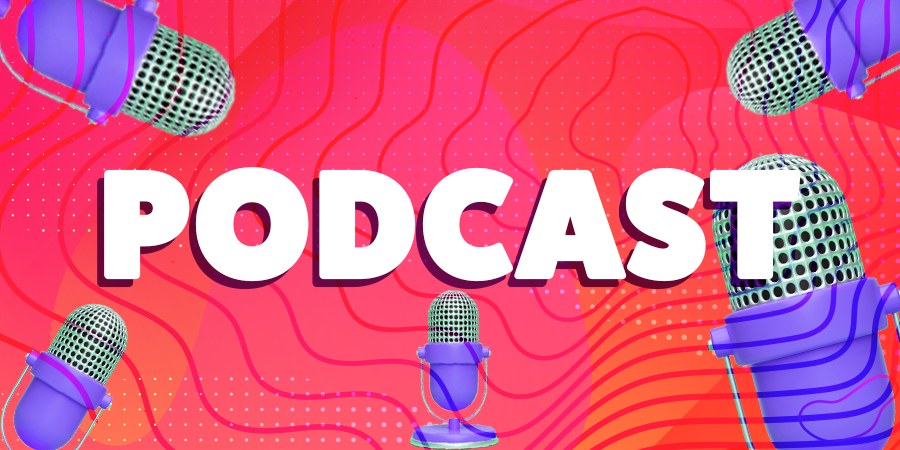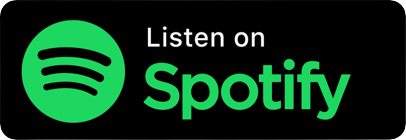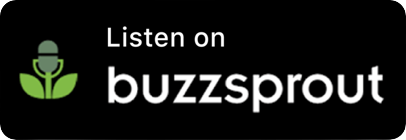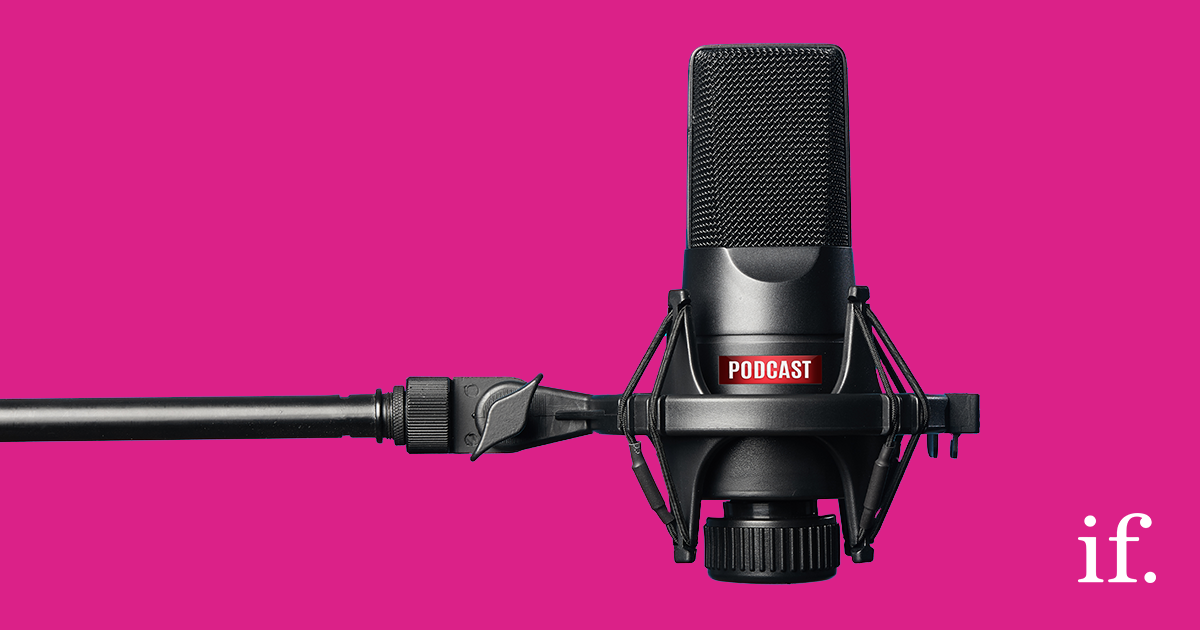Ep. 27: Serious Social – Cracking the branded community code
This year more than most, online communities have sprung up for all sorts of people to connect with each other. Brands are keen to get in on the action, looking to build branded communities. In this session, Katy Howell explores why so many communities fail and what steps and investment you need – and if it’s even worth the bother at all!
If you’re after more know-how to break the social boring, subscribe now.
Full Transcript
Welcome to the Serious Social podcast, created by the straight-talking social media experts at immediate future.
Well hi, this is a rather impromptu Serious Social, but I thought it was a really good idea to bring something up that I’m hearing quite a lot of.
I spend most of my life talking to brands and marketeers. And over recent months, there’s been a recurring question. Specifically, we want to build branded communities, which is brilliant, really interesting, but it’s also a bit of a challenge.
Most people that when they think about branded communities are considering whether or not they can pull people together around their brand, and have champions, and make sure that they create an environment in which they can get advocates; and maybe cross sell, upsell, build loyalty.
Sounds great.
It also sounds really simple, like many things in social media, it sounds like the simplest thing you can do, which is, why not set up a Facebook group, or a LinkedIn group?
But it’s not the simplest thing. And this is a real challenge right now. Which is that it feels like an easy thing to do but setting up a branded community is not easy.
So one of the things that we see quite a lot of, and after 16 years in social, I’ve seen a lot of these, are branded communities that have tumbleweed in them now. They’re kind of defunct. Nobody really chats in them. You kind of see quite a lot of these on LinkedIn, but I tell you, there’s a fair few on Facebook.
So let’s start with, what is a branded community? I dug this up from, let me just put this up. So from Wikipedia, it’s a bit of a shortened version of it, but there you go. But the reality is that lots of people think that in social a branded community are your followers.
They’re not a community, they are your followers, and they’re often your fans and sometimes your super fans.
But actually a good branded community is much more than that, it’s deeper than that. And I think that we misinterpret the word community quite a lot. Assuming it just means volume of people, but community is actually sort of integrated. It’s a web of connections that talk to each other as much as they talk to us as a brand.
So really good example is Harley Davidson, who built a brand community a number of years ago, ardent consumers don’t get me wrong. They love the brand, but they’re organised much more around lifestyle, activities and the kind of ethos of the brand and that’s what you’re looking for.
I think one of the reasons, and I think this is really interesting, because there’s been some changes through the pandemic in the way that we behave. And I think some of the reason why CMO’s are asking about branded communities is that they’re seeing that behaviour from our audiences.
So according to GWI, people are turning to kind of these smaller communities for authentic connections. Their data, which I looked at yesterday, shows that 64% of online community site visitors say they are visiting those sites more often than they did a couple of years ago. And we’re seeing the same too. And 46% say that these communities have become more and more important to them. It feels like audiences are moving to a niche and away from being broadcasters. We’re not throwing stuff into our timelines for public consumption, but actually bringing it closer to those kind of connections. And that is probably the view that most CMO’s that spend any time in social are seeing.
So we want relevant connections. And in fact, a large amount of these communities are being built in the dark. So on WhatsApp, on Messenger on little groups and closed private groups. I mean, even my neighbour here has a closed private Facebook group since lockdown, where we all chat and talk about dog poo on the street, basically. But it’s really interesting, because this dark social, this social which is private and really inaccessible to brands; the big social networks are trying to make it more accessible to us as brands, but we don’t own it.
And then you have groups like Guild who don’t allow the brands to muck about, but actually have these amazingly integrated groups that share really good information across the board. I mean, they’re predominantly B2B, Guild, but what’s really interesting about it is the depth of conversation that actually keeps people coming back.
And that is where we’re heading right now. People want more and they want quality. So people are hungry for that sense of connection. And actually, GWI also goes on to it. I’m just reading this out. GWA goes on to say – “Findings from our studies show that making connections with other people that have similar interests, 66%, is one of the primary drivers behind why users engage in online community.”
So it’s about interests, and it’s about connections. So the question is can brands really create communities? If so, why do so many of them fail? And the thing is the community around a brand is so tempting, isn’t it? Because you think – well, this is going to be more efficient, these are people who like us; we can express our brand authenticity and all those wonderful things about our purpose and we can build loyalty.
But the problem is that none of that comes without investment and a really serious truckload of investment. And I don’t just mean budgets. I mean resource, thinking, vested time and every day vested time. A great community doesn’t just turn on and turn off. And that is a big commitment for any brand, and any CMO.
So, what are the steps?
I’m not going to go through the whole lot, because we’d be here for hours, but I want to share with you why it’s so important that you don’t just set up a Facebook group or a LinkedIn group. You don’t suddenly wade in on a forum or set up a thread without thinking about it.
So I asked my colleagues actually, and a couple of them have come up with some tips. So I’ve incorporated those into some of the steps I’m talking about.
So the first one is from Belle. And she makes a really valid point about clarity. Too many communities are set without a strategy. Nobody knows where they’re going or what the purpose of that community is.
Setting up a community is like, back in the day people would say to me, “we want to be on Twitter.” And, you know, that that’s not a strategy. That’s just being on Twitter. And that takes you about five minutes and you can be on Twitter. The strategy, the objectives and goals that you should be pursuing is what purpose will that serve? What will that feed into? And I know that’s really 101 but it never stopped surprising me how many people don’t do that. How many people walk away from that thinking prior to doing this, because it’s such an easy point of entry.
So decide on your community. Is it a community of authority? Is it community of support, or customer support? Is it a group of your employees? Is it specialists? Is it your consumers, who are your fans, or consumers who are fans of an interest group that sit alongside that?
Great example, just mentioning Guild again. So, B2B Marketing magazine has a leaders programme on Guild, which has about a hundred CMO’s. And they talk about exclusive content, live events, online peer community, that actually talk to each other and they have a really singular purpose. This is a leadership community for the B2B sector. The same challenges and same problems that everybody is suffering from at the time that can be shared. You know, should you do ABM this way? Should you do this that way? All of these things, what CRM system works best? Is this product better than the other? All of these questions are being shared in a community of people who sit together and work in similar interest groups, whether they are professional or otherwise.
The other part to thinking with clarity is understanding that your strategy needs to flex. It isn’t good enough to have a community strategy that is one single goal. And part of the reason it needs to flex is that you need to nudge and nurture a community.
I always think about this more like my neighbourhood and the brilliant people that organised the street parties back in the days, when we could have street parties, but organised street parties. So I always think – “Good Lord, they’re so good at galvanising all of us!” Then you get told what you have to bring, everybody helps out and everybody contributes. There are people pulling out trestle tables, somebody organising the plastic hats and everything else. But there is always one or two people right at the centre of that that make it happen. And that is really crucial, because that is the role that the brand should take. Is galvanising through nudging and nurturing, and intense planning about what goes ahead.
So take Red Bull as an example. They don’t talk about fizzy drinks. They don’t expect people to fall over themselves to talk about a can of sweet, sugary stuff. But they do talk about adventure, sports and extreme everything. Which fits with their brand messaging and ultimately building that community that sits around their brand.
So number two comes from Colin, who kindly reminds us, which is something that we’re doing quite a lot of these days, which is, it’s not about volume of content. It’s about quality of content and producing that content that’s relevant to your audience.
Just because it’s a community doesn’t mean you can get away without thinking about it. I’m not talking about quality of video, although, for some brands, that will matter. If you’re Red Bull, you want good quality video. I’m talking about the actual substance that sits behind your content. And that takes time. That’s the thinking before you put pen to paper or drag out your Photoshop. 36% of community members across various sites say they want to have meaningful conversations. Really, as a brand that’s quite a difficult thing to do. You’re a brand, not a person. So you have to plan how you’re going to have meaningful conversations. And community topics really vary between humour and niche interest.
Your content needs to really bend and flex even on the day that it is, you know, which day is it today? Is it a good day? Is it a bad day? What’s in the news? What moments are happening?
What’s really interesting and more, a little bit more GWI, a Global Web Index data, which says 27% of community users want brands to be bold, 29% of them want to be funny, 57%, so over half of them want them to be reliable.
Reliable.
You know how I said consistent at the beginning? That means you need to plan for the emotional, the entertaining and the always on. So, the next point is, it goes without selling, or without saying, without selling. Without saying, don’t sell. It’s tempting, I know, but what you really need to do is create quite a rigid message architecture so that you stop yourself from going – “Our brand is brilliant” because it’s so tempting. Particularly if you get that kind of feedback from your community as well, it’s really tempting. You really have to, the way to avoid being too salesy, too “buy my stuff” and that includes, by the way, when it comes to community inserting the offers, deals and things like that – be really careful. You need to understand your audience. Building communities around offers and deals it’ll bring you one type of audience. And the more salesy you get, the more competitions you run, the more ‘compers’ you’ll get. These are not your customers. This is not a community. This is just people who are following you and taking the best out of the opportunity that is given to them.
So that means that you need to think about the flow of conversation, your voice and you really need to think about your voice. This is not just tone for brand. This is your conversational voice. What is it going to be? And then how you use that voice to unite them, this community that you’re building, through shared goals, shared experiences and a need to follow you as a cause for something.
The next point, number four – is managing the community is a full time job.
And this is a really interesting thing, because back in the day, when social wasn’t even social it was all message boards and forums. We used to have community managers and moderators. And we don’t hear the word moderators anymore but actually the management of a community is less management and control; and much more about curation and co-creation. A good community manager is actually much more about inspiring and sparking that interest.
You know the brand Vans, the skateboarding shoes, they built a really great community by co-creating and co-creating with lead users, within each of the sports communities to co-design new products. That is a community. I mean, I won’t go on about Lego, because everybody goes on about Lego, but Lego does exactly the same thing. And that means that your community is more than marketing. So you need to drive it up the food chain into your business.
So how will your community be part and integrated with your business? And that means you quite often need to embrace conflict, disagreement, not necessarily trolling, but people who don’t feel the same way. And it also means you need to consider who are your VIP’s? Who deserves kudos? How will you nurture the super users? Because they are the people that will help support you in nurturing and nudging your community.
Last point.
So, build, and they will come, oh my gosh, this feels like a 90’s conversation I’m having;
which is the temptation that people have to create a community and then just hope that people will just turn up and fall in love with it. But the world is too noisy. There are so many profiles and so many places we can spend our time that in reality, that doesn’t happen. You have to use paid and you have to drive acquisition. You have to push people towards your community.
But that isn’t enough either, you have to do more than drive acquisition. You have to have an acquisition strategy that also includes an onboarding strategy. And you see this in some of the kind of app type communities where you’re being asked to fill in extra bits, and you sort of join; then they say – “Please tell us what you’re interested in, please add to this group, you might be interested in this.” And it is an onboarding strategy to get you involved in that community. Kind of like the new neighbour drinks – think of it that way. But you cannot just leave it simply to sit there waiting for people to come. It’s never worked. It hasn’t worked in the 30 years I’ve done marketing. So, you know, who knows?
Right, so, one last point – where do you build this community? Because it’s a huge investment. You can see it. Even if it isn’t a massive financial investment, it’s a time investment and it’s a focus investment. And if you want to get ROI you need to think deeply.
Now I haven’t got a straightforward answer for you. You can, number one, play where they’re playing. Which is to build your community on Facebook or within a Twitter group,
or within a LinkedIn group. You can build your community within the social sphere, or in a forum, or in a thread, on Reddit, on Twitch. You can build your community if that’s what you want to do. But there is a risk. There is a risk that of course the platforms change their minds, and the platforms change their minds an awful lot, don’t they? You know, suddenly groups are being published everywhere and then suddenly they’re not and you find yourself silenced. You find you can’t put images in groups, because you could yesterday, but you can’t today. So you are at the whim of investing a great deal of time and effort in building a community that you don’t own on a platform you don’t own. And we do hear those cries. People say – “We want to move our community over here. We’ve changed our company name. We need to move it over here.” It is just an expensive and challenging job and you lose people in the effort of doing that. So it is one of those things, but, the advantage being is this is where people play and there is a resistance. Bearing in mind we’re on, whatever it is eight or so social media platforms on average in the UK, you kind of go, there is a resistance to going to somewhere new.
So you can build your own. You can create your own. There are lots of different apps and different platforms that you can buy and use to create your own community. But then you have the job of persuading people to come away and then to consistently come to you, which means that you have to work a lot harder. And I think that is a really big challenge. And for most brands, that tends to put them off. But, you have to be aware of both pros and cons.
So it is hard work, but there are great rewards for communities. It’s about reaching your users at those points of passions, where you can be more relevant and spark really deep connections with consumers. And done well, it will build brand and it can really help with that issue that we’re all having at the moment which is how can we be authentic? How can we have an authentic voice? It will help and support you with loyalty, lifetime customer value, advocacy and amplification, peer to peer support, which can be superb if you; and there are lots of tech communities that do exactly that. And it can give your business ideas and creative thinking.
So there is no two ways about it a community is a fantastic way to consider connecting your brand to your customers and your future customers. Where you can upsell, cross sell and all that sort of stuff. But, and the big but I would say, is that we need to think, when we talk about community about the investment it will take. It is a big ask. To do it well, and to get the ROI out the other end, you actually have to put quite a lot of effort in.
I hope this is really useful. It is my first time going live on a multitude of channels. So excuse all the looking to one side and clicking on weird things.
Love it if you have some questions, I think we have one quick question here from Michelle.
So yes, Michelle has also written an article and I’ll pop a posting comment about community. It feels like the whole world is suddenly talking about it. It really feels like the early 2000’s to me when everything was message boards and community. So I think that there is a real opportunity for us to kind of cast, well those of us who were old enough to remember. Cast are minds back to when it was all about building community on places like Myspace, yes, Bebo, Habbo Hotel and all those places that we don’t remember anymore.
So I hope this is really useful. I push this out because I think it’s really timely. And this is a good time to take stock before everybody rushes into setting up Facebook groups and LinkedIn groups and weird and wonderful communities – and then we end up with tumbleweed about 12 months later.
So please do feel free to ask questions afterwards. Reply in comments, you know I’ll always answer.
And thank you for your time this morning.
If you’re after more know-how to break the social boring, subscribe now and check out the show notes for links to our website and social profiles.




